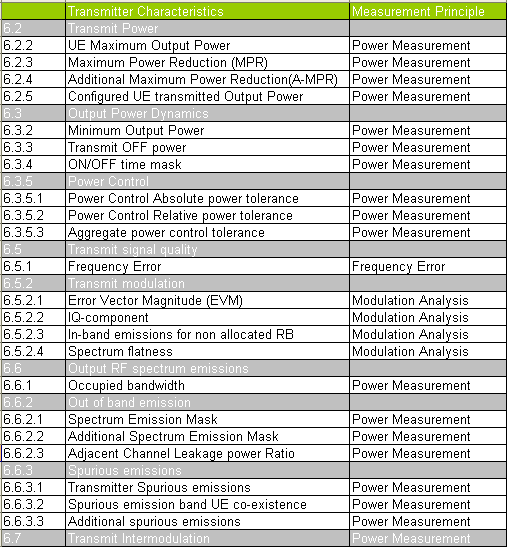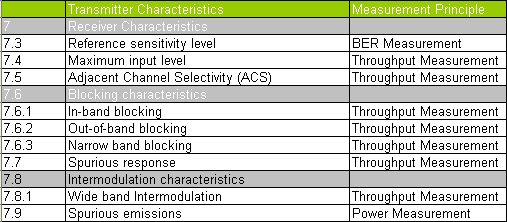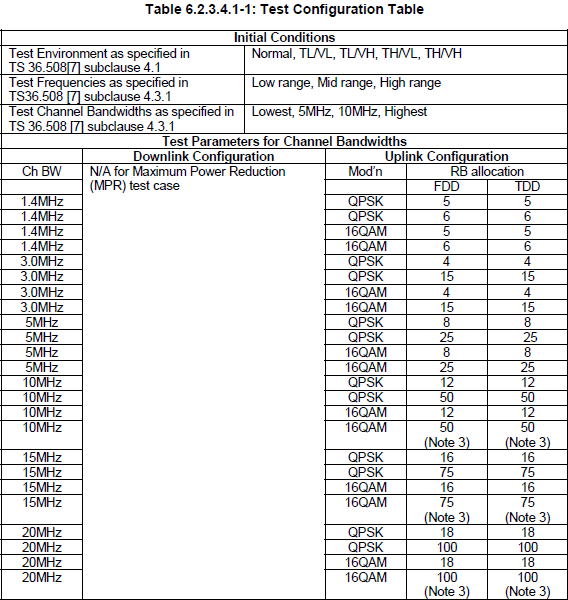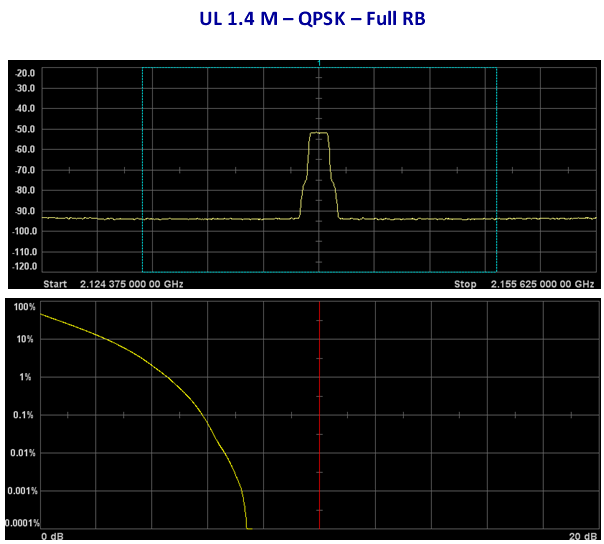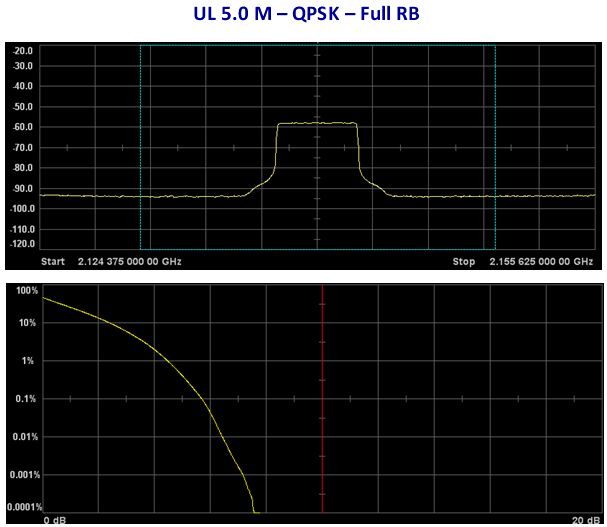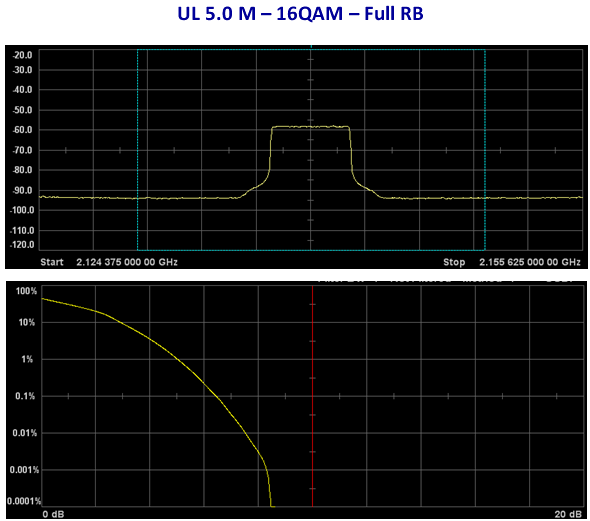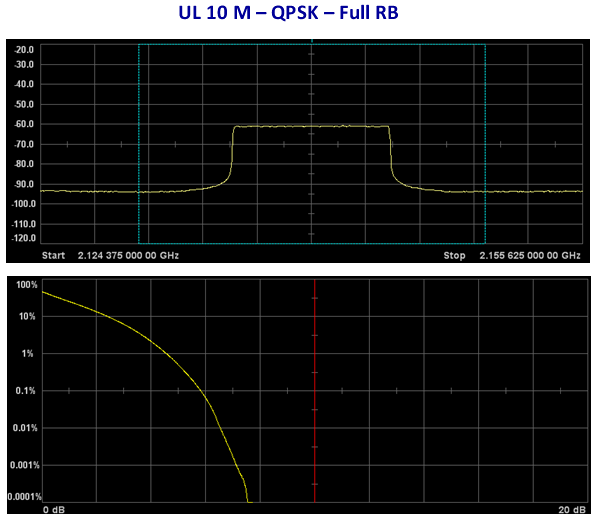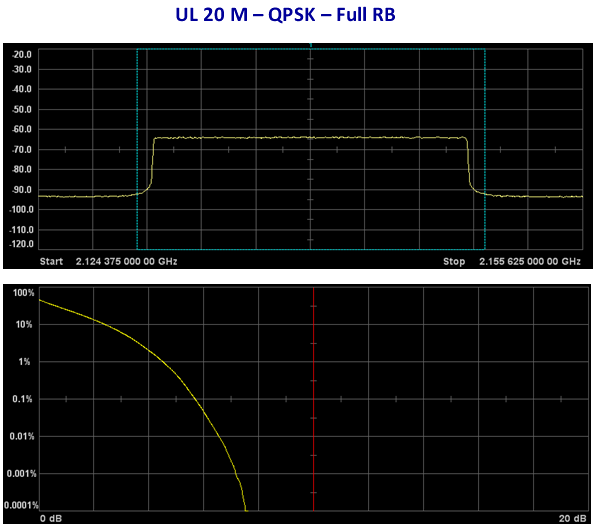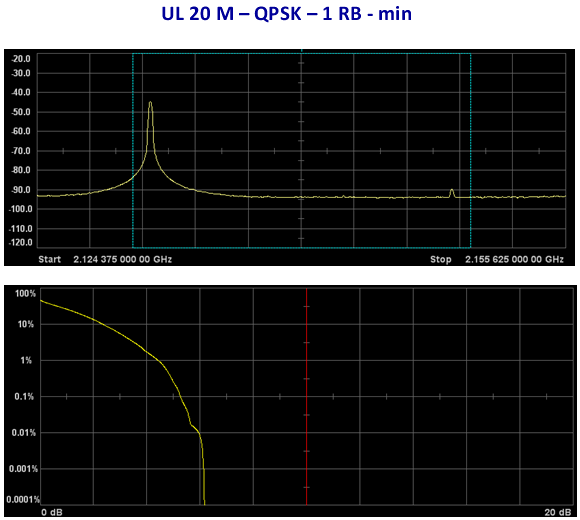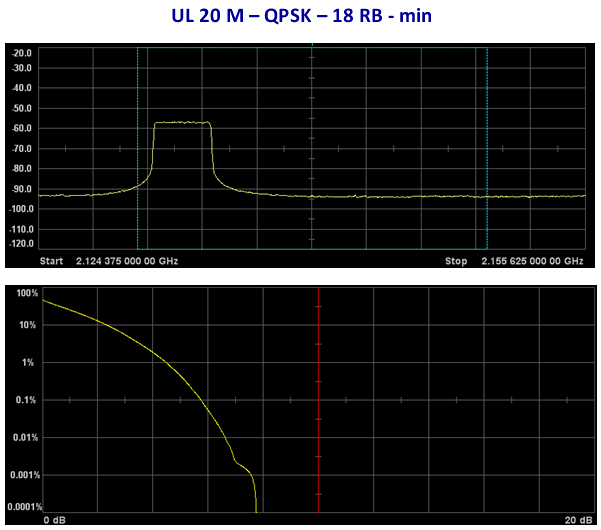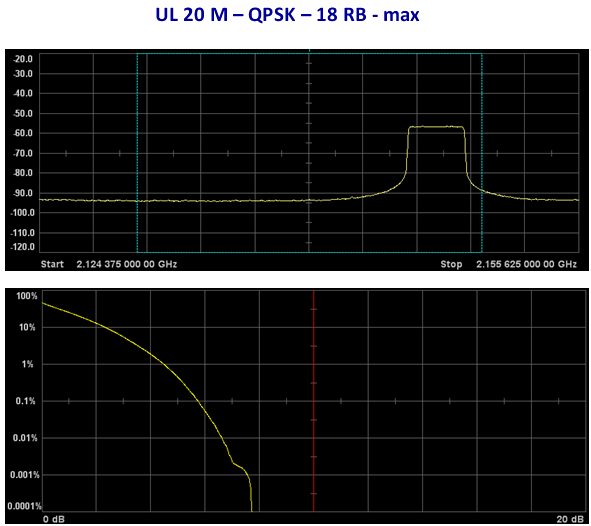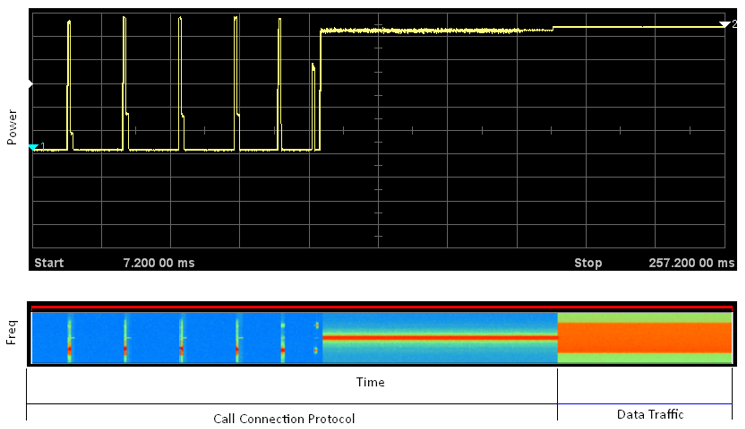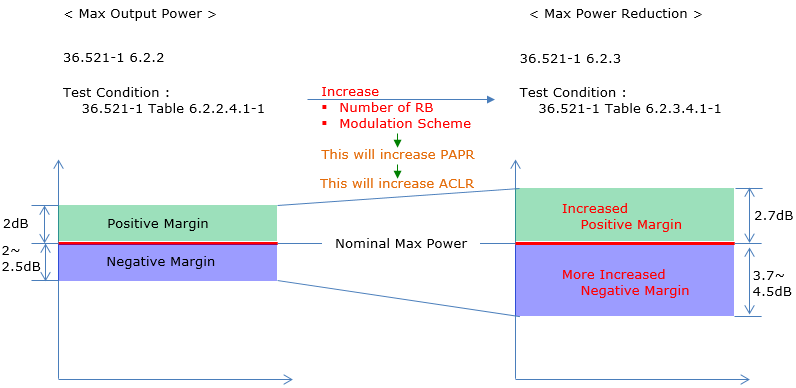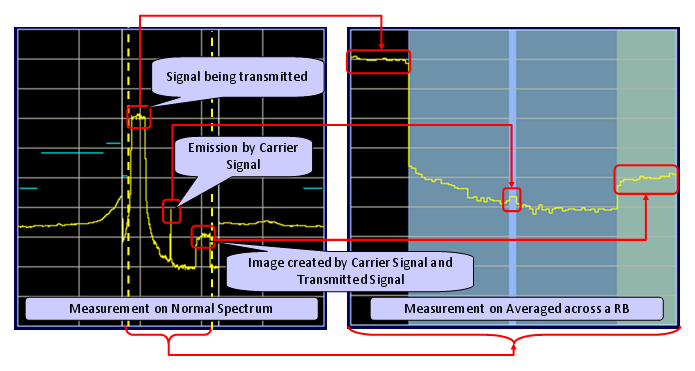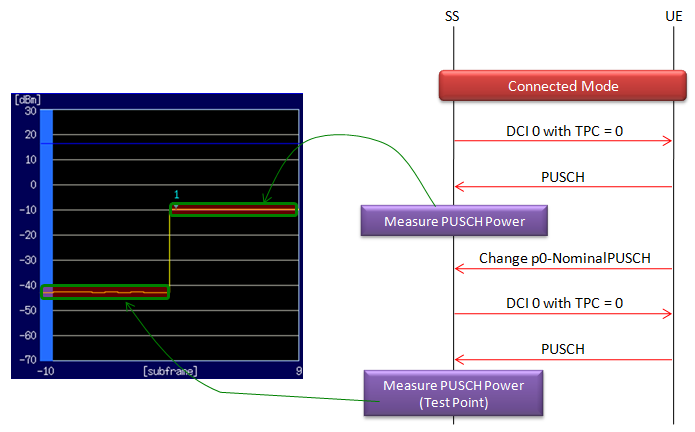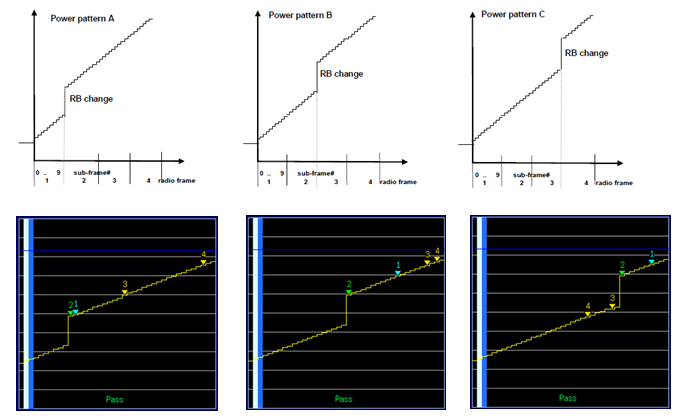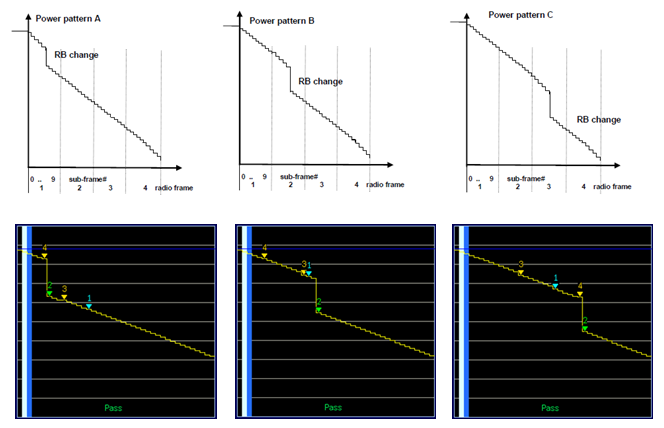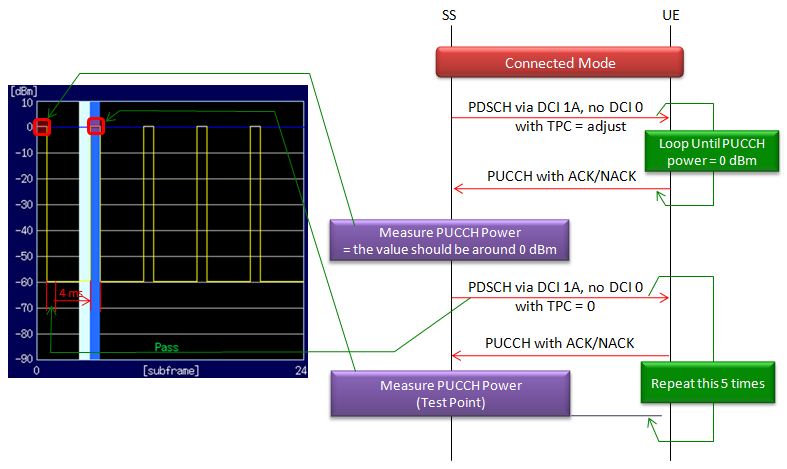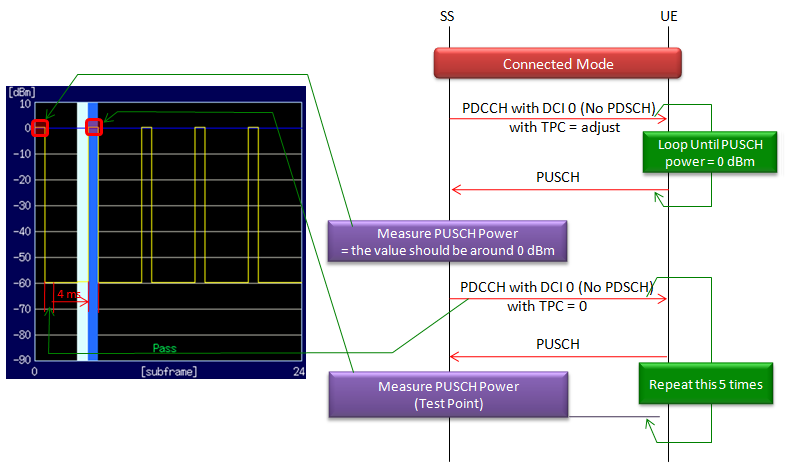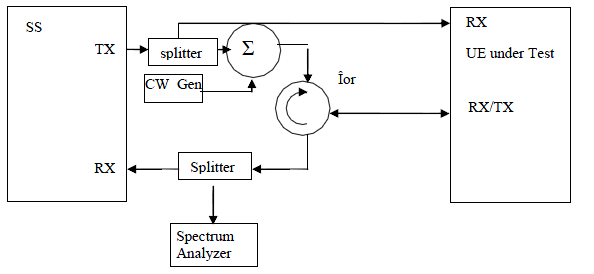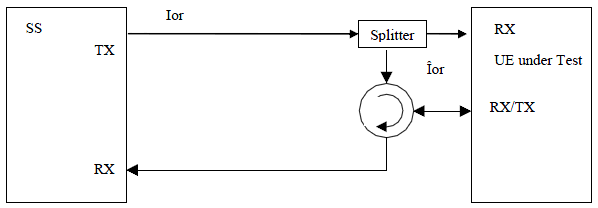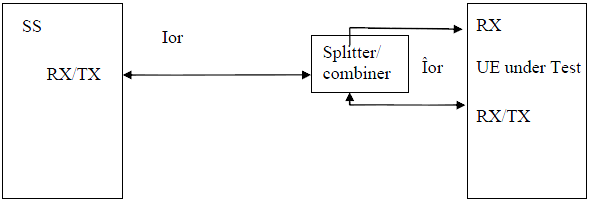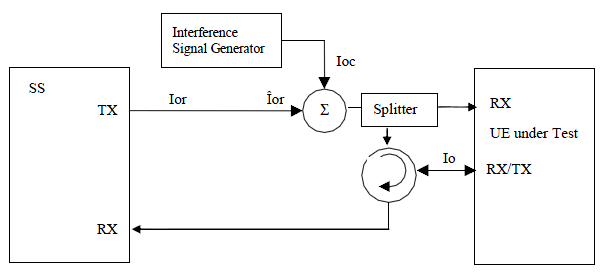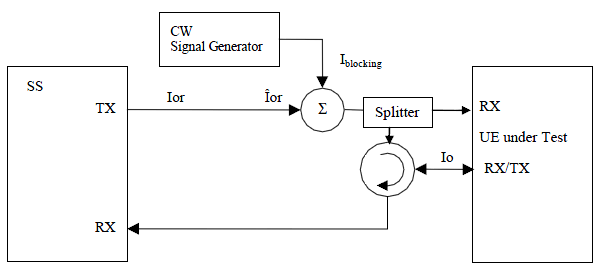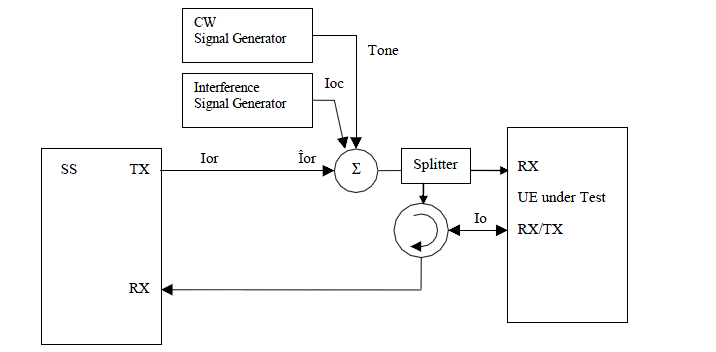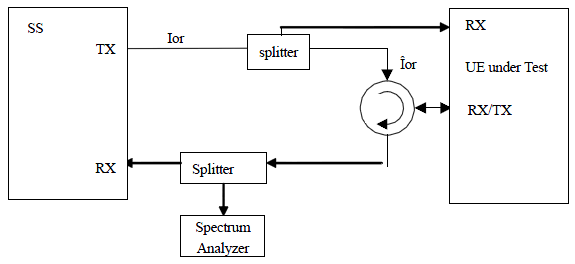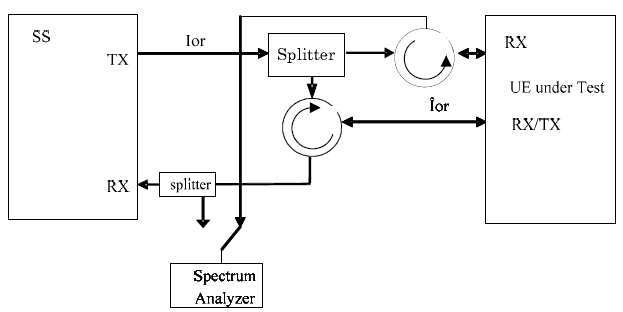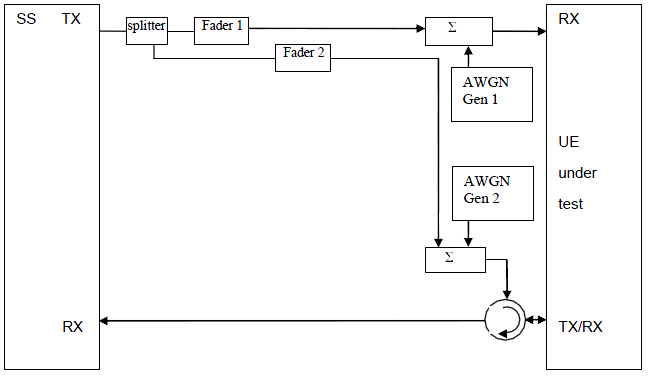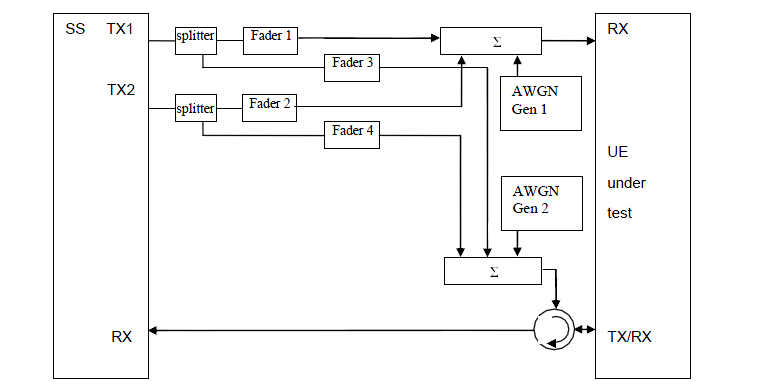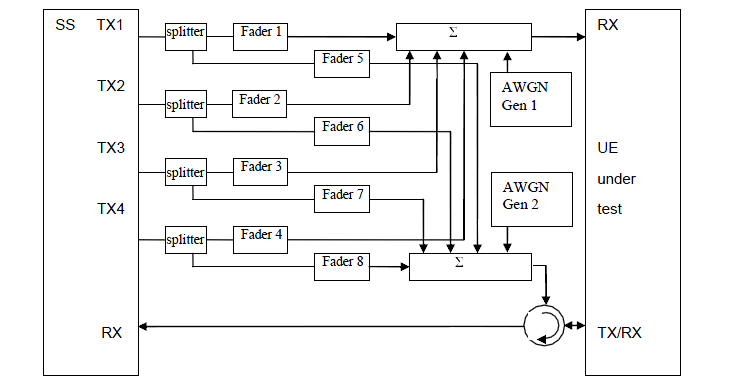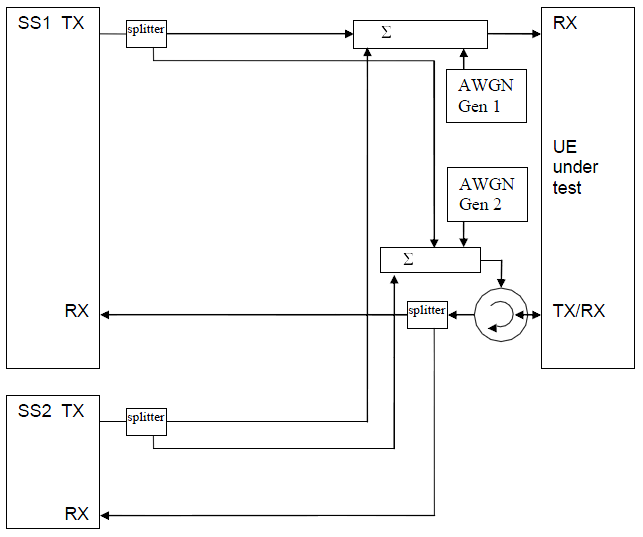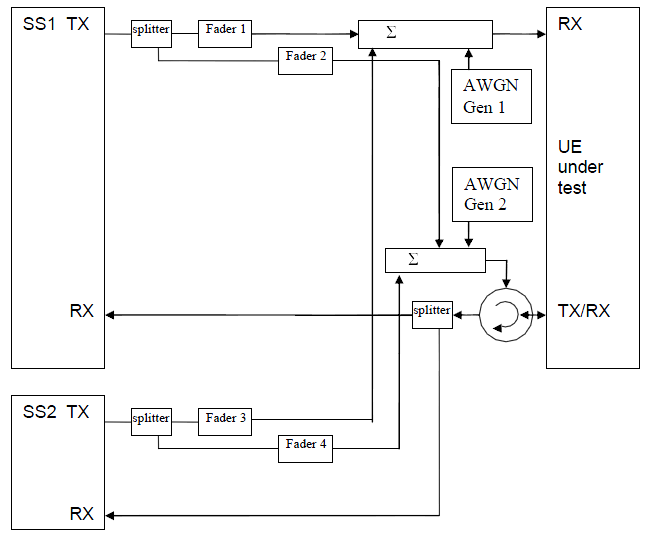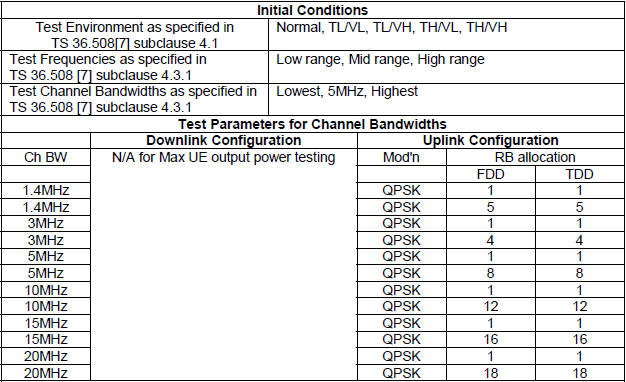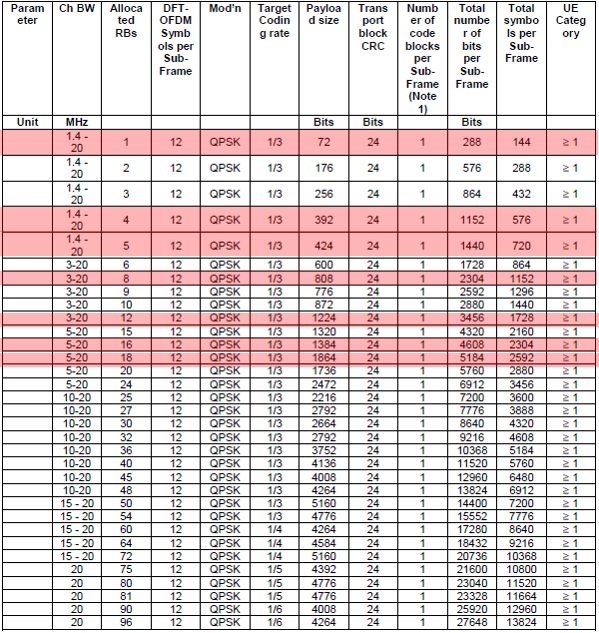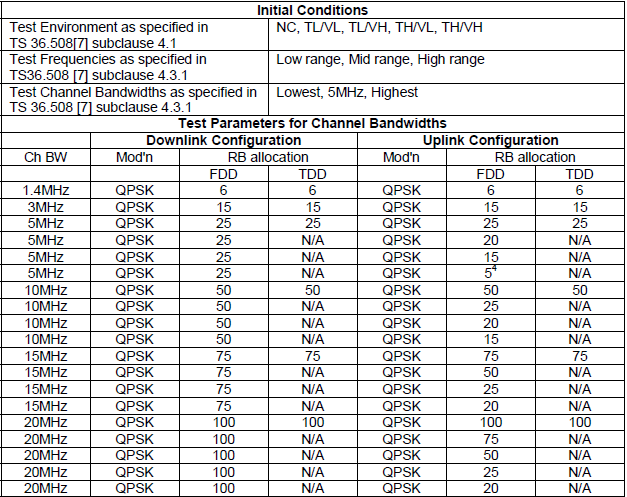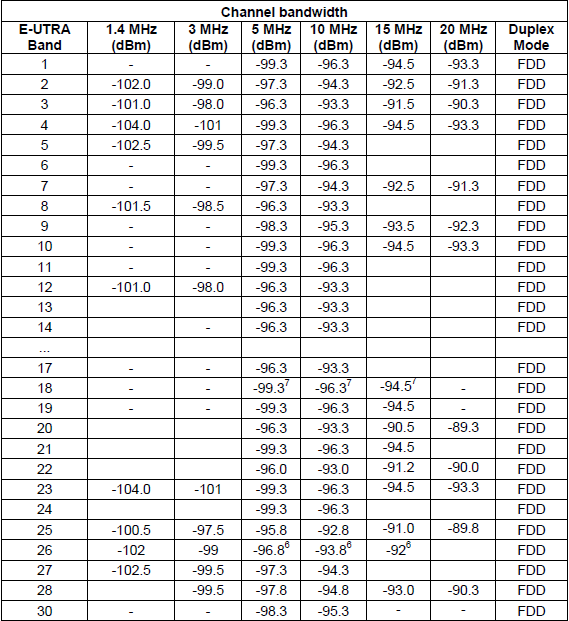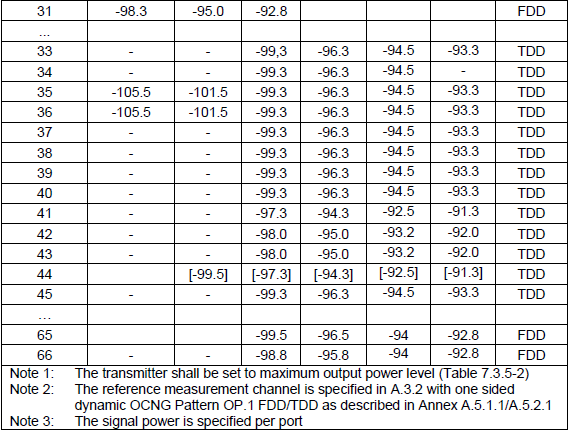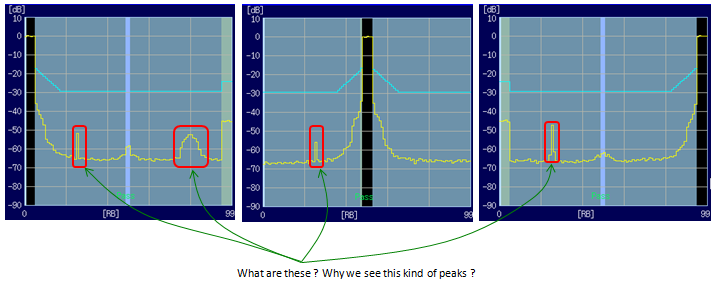|
4G/LTE - Test |
|||||||||||||||||||||||||||||||||||||||||||||||||||||||||||||||||||||||||||||||||||||||||||||||||||||||||||||||||||||||||||||||||||||||||||||||||||||||||||||||||||||||||||||||||||||||||||||||||||||||||||||||||||||||||||||||||||||||||||||||||||||
|
RF Test and Measurement
In any wireless communication device, we have to go through two large group of testing. One for testing transmission path and the other for testing recieve path.
For a wireless communication device to work properly, it should meet following hardware requirement
i) The device should transmit the signal which is strong enough power to make it sure it reaches the other party of the communication. ii) The device should not transmit the signal which is so strong that it interfere the communication between other parties. iii) The device should transmit the signal with good enough quality which can be decoded/corrected by the other party. iv) The device should transmit the signal in the exact frequency that has been allocated for the communication. v) The device should not generate any noise out side of the frequency area that has been allocated for the device.
If any of these condition deviate too much from the specification, the device cannot communicate with the other party or let some other device to communicate. In terms of measurement equipment, item i) and ii) belong to "power measurement", item iii) is related to "Modulation Analysis" and item iv) falls into "Frequency Error measurement". Item v) is also a kind of "power measurement", but the measurement area in frequency domain is different from item i) & item ii). Anyway if you have any equipment that can perform the following three measurement for your communication technology, you can do the most critical part of transmission path.
a) Power Measurement b) Modulation Analysis c) Frequency Error Measurement
Now let's think about the recieve path measurement. What would be the most important reciever characteristics for the communication device ?
i) The reciever must be able to decode successfuly the signal coming from a transmitter even though the signal strength is very low. ii) The reciever must be able to decode successfuly the signal coming from a transmitter even when there are a certain level of noise around the signal.
In terms of measurement logic, item i) and ii) are the same. Equipment sends a pattern of the known signal and let the reciever decode it and compare the original signal from the equipment and the decoded signal by reciever and how much different they are. The more different they are, the poorer reciever quality it is. We call this method "BER(Bit Error Rate) measurement". Item i) measures BER when the input signal to the device is very low and Item ii) measures BER when there are noise to the input signal.
Before we go forward to LTE measurement, pick any technology you are already familiar with and make a list of measurement on your test plan and try to map those items with the measurement principles I described above. Once you are familiar with this mapping, you will understand LTE measurement items more easily.
Now let's look a little bit detail into LTE RF measurement. First thing I have done is to make a list of measurement items from 3GPP 36.521-1 and try to map my measurement principles with each of the measurement items.
Here goes the Transmitter measurement items first. You see a lot of "Power Measurement" and some of "Modulation Analysis". Why do we have so many different power measurement and so many different Modulation Analysis. How do they differ from each other ? This is the question you have to find answers on your own. The answer itself is described in 3GPP 36.521-1 but the question is how much I can understand what is described there just by reading it.
The first step would be to read "Test Purpose", "Initial Condition", "Test Procedure" section of each test case as often as possible and try at least to be familiar to each test case.
Here goes the reciever measurement items.
Snapshots of LTE Uplink Signals for RF Testing
As I mentioned earlier, it is not easy to understand all the details of LTE RF Measurement just by reading the specification. I have read the test case purpose, "Initial Condition", "Test Procedure" over and over.. but still everything is vague. As I try to get more into details, the first obstacles that blocks me is a lot of complicated tables describing the test condition. Of course we saw this kind of tables in other technology specification like CDMA, WCDMA but it seems the tables for LTE measurement looks bigger and more complicated. So I decided to see some of the signal patterns described in the specification on spectrum analyzer so that I can get some intuitive idea of the overall RF characteristics of each condition.
For example, following table shows the test condition for each of subtests for MPR (Maximum Power Reduction). If you see the column Uplink Configuration - RB allocation. You will see various cases of resource block allocation for the same Ch BW. Some of the sub tests uses 'Max RB number' (FULL RBs) for the specific channel BW, but some of the subtests are using the number of RBs which is smaller than the Max number of RB (Partial RBs).
< Full RB Signals >
< Partial RB signals >
In case of allocating the number of RBs less than the max RBs (especially when the number of RB is less than 1/2 Max RBs, there can be so many different cases depending on the location of the signal. For example, the signal can be located at the left most side of the channel or at the center or at the right most side of the channel. Theoretically, it can be located in anywhere in the band, but RF conformance specifies only three locations as a test point which is Low range, Mid range, High range. Low range means that the signal start from the left most side of the channel, Mid means the signal is located at the center of the channel, High range means the signal is at the right most side of the channel.
Following sample signals are from a vector signal generator which generate a very good quality signal and the power is also very low, so you see only the signal part without any carrier leakage or in-band image. But in reality, you will see the carrier leakage and in-band image signal in most of the case.
Even though we have new technology every couple of years and LTE is new to many people, RF test and measurement technology have a lot in common with other wireless communication technology. If you had experience with any wireless technology, eg CDMA, GSM, WCDMA, Bluetooth, WLAN, you may find the common logics in LTE.
One of the biggest challenges in LTE measurement for UE development or test engineer would be that there are too many sub tests with too many different parameter settings.Before I get into details, I want to briefly skim through overall RF measurement from C2K.
I don't have much experience with C2K measurement, but with only a little experience I could tell there are much fewer measurement items in this area comparing to WCDMA/HSDPA and even comparing to GSM/GPRS. As far as I remember, following is allmost all that I did for C2K. i) Total Channel Power ii) CDP (Code Domain Power) iii) Rho iv) Spectrum Emission v) ACLR vi) OBW (Occupied Bandwidth) But the items listed above is more than what I experienced in C2K. For conformance, I think we may have to go through all of these items. But since C2K is very mature technology now, in the RF part developmental stage we wouldn't go through all of these items. In an extreme case that I heard of was "just measure total power, if there is no problem with it. usually no problem with other parts".
Now let's look into WCDMA. For WCDMA R99 (Non HSPA), If I briefly put the list, i) Max Power ii) Min Power iii) On/Off Power iv) RACH Power v) EVM vi) Spectrum Emission vii) ACLR viii) OBW (Occupied Bandwidth) Just in terms of list, it doesn't look like much difference from C2K. But practically the engineer would meet various characteristics which may look quite different from C2K. The first thing we can think of is that the channel bandwith get tripled compared to C2K and this would introduce a lot of complication in RF design. Another issue is RACH process in WCDMA is more complicated than probing process in C2K and add a couple of important test steps.
Now let's look further into HSDPA. You may think HSDPA would not be much different from R99 in terms of Uplink measurement because HSDPA is only for downlink data rate. It is true in terms of high level protocol, but in physical/RF layer an important factor was added to uplink in HSDPA. It is HS-DPCCH. HS-DPCCH is for UE to report CQI and ACK/NACK to BTS. The problem is that even with this additional channels the UE has to maitain the total uplink power as before. So the UE recalculate/rearrange each of the physical channel power. So if you look at the RF conformance test case list, you would not find much difference in terms of test case items but you would find quite a many of sub items were added to the existing test case due to the introduction of HSDPCCH. (If you want to go into further detail, open up 3GPP 34.121 and find the test cases with the keyword "HSDPCCH" in the test title).
Going one step further into HSUPA, you also find no such a big difference in terms of measurement items. But as in HSDPA case, a new physical channel was introduced and it is called E-DPCH. Even with this additional channel, UE also have to maintain the total channel power as in R99. So, as you may guess, UE has to recalculate/rearrange each of physical channel powers. As a result, we would get a couple of additional sub-items added to RF testing.
Finally.. let's think about LTE. What is the biggest difference between LTE and C2K/WCDMA/HSPA in terms of PHY/RF layer ? It would be OFDM. Yes, it is. What kind of additional measurement items would be introduced to RF testing due to the OFDM ? Since OFDM is made up of a lot of sub carrier with very narrow bandwidth, we have to measure most of the characteristics listed above for each OFDM subcarrier. But if we do all of the items for each of the sub carriers, it would take one full day just for one item. Another big difference would be that LTE specification allow many different type of system bandwidth whereas in C2K/WCDMA, the system bandwidth is always same. It means you have to measure the whole set of test items for multiple different system bandwidth which multiplies the measurement time and parameter settings in measurement equipment.Based on the LTE specification, an LTE system bandwidth can be any of 1.4 Mhz, 3 Mhz, 5 Mhz, 10 Mhz, 15 Mhz, 20 Mhz whereas C2K can only have single bandwidth of 1.28 and WCDMA can only have single bandwidth of 3.84. Of course, a specific system operator would use only one of the bandwidth in their network but Mobile device manufacturer should design the UE which support all of these bandwidth.On top of this, there is another factors to make LTE test even more complex especially for mobile phone design/test. It is the fact that a real bandwidth being used at a specific time can change dinamically.
One intuitive example is shown in the following measurement screen. This the RF signal captured for LTE call connection and data transfer. When you initiate a call, the mobile device would go through the protocol sequence for call setup and then data fraffic would start. If you see at the bottom of the screen (spectrogram) of the measurement screen, you would notice that frequency allocation (bandwidth being used) during this period changes. In this screen, the frequence allocation for data traffic does not change, but in live network this bandwidth would change dynamically.
What is the implication of these multiple system bandwith and dynamic bandwidth change to Mobile phone designer and the test engineer ? For designers, the biggest issues would be how to optimize various kinds of design parameters to be best fit for all of these bands. For test engineers, the biggest issue would be huge number of the test cases they have to go through. Final outcome of all these considerations on multiple bandwidth and dynamic bandwidth change can be examplified as a table shown below. This is a table for only one test case. See all those different system bandwith you have to cover. Different RB allocations is for dynamic frequency allocation that I mentioned above. In LTE, for every test case you would have this kind of tables and this will be huge headache to designers and test engineers.
Even though LTE RF measurement has a lot of common characteristics which is similar to other technology, there are several measurement which is unique to LTE. Can you guess which would be the LTE specific tests ? If you recall unique properties of LTE signal that I described above, you would make a pretty good guess.
< MPR (Maximum Power Reduction) >
Theoretically this test can be applied to UMTS as well, but as far as I know UMTS does not have this test as a formal conformance test item. It took me very long time to get some practical understanding on the purpose of this test. I didn't have clear understanding on how Maximum Power Reduction test is different from Maximum Output Power test. If you read test procedure of Maximum Output Power test and Maximum Power Reduction test, you would notice they are almost same. Actually there is no outstanding difference in terms of test procedure between Max Output Power test and Max Power Reduction test. The difference between the two lies in test condition and test requirement as illustrated below. Max Output Power test is done with minimum modulation scheme (QPSK) and very small number of RB allocation. In Max Power Reduction test, we use more RB and higher modulation scheme comparing to Max Output Power test and then allow more margin (especially in negative side margin) in Max Power Reduction test.
As described above, the test procedure is simple to understand .. do the same test as Max Output Power but just using different RB allocation and modulation scheme and apply relaxed passing condition(test requirement). The question is why we need to allow this kind of relaxation of the requirement when we increase the number of RB and Modulation scheme. You may intuitively understand that PAPR (Peak to Average Power Ratio) will increase as the modulation depth increase (e.g, 16 QAM will produce larger PAPR than QPSK and 64 QAM will produce larger PAPR than 16 QAM). Also, if you are familiar with the property of OFDM, you would understand more RB (more sub carriers) will produce larger PAPR as well. In max power condition, the TX amplifier may operate at the very top of linear region. If you increase PAPR, the TX signal would easily goes into non-linear region of the amplifier and increase ACLR as result. One of the easiest way to prevent this kind of ACLR violation would be decrease the max power (max average power) a little bit. 3GPP decided to allow this kind max power reduction when the large number of RB is used or higher modulation scheme is used so that UE can lower the average max power a little bit to meet the ACLR passing criteria.
One of the most unique feature of LTE would be that in most case UE does not use full system bandwidth, meaning it uses only a portion of RF bandwidth. Just in terms of RF characteristics, this partial usage of RF band would not cause any serious problem, but what if the portion is allocated to only one side around the center frequency ? You would see the spectrum as follows.(I would not explain this picture in detail. Just take a close look and try to vervalize what you see in this picture and you would know the meaning and why we need to measure this item). The design goal for UE transmitter is to minimize the emission at the center frequency and the other emission (Image signal).
< Power Control - Absolute Power Tolerance >
When UE transmit the first PUSCH, the power is determined by p0-NominalPUSCH and PUSCH Power Control Algorithm. This test is to check if UE set the accurate initial PUSCH power according to p0-NominalPUSCH and PUSCH Power Control Algorithm (This is different from what we call Open Loop Power Control in 3G. When we say "open loop power control", it usually mean the initial PRACH power. On the contrary, Absolute Power Tolerance is about the initial PUSCH power ).
< Power Control - Relative Power Tolerance >
Another aspect I want to mention is about power control. Overall power control test method is very similar to WCDMA ILPC(Inner Loop Power Control) test. Network (SS) sends a consecutive sequence of TPC command (Transmission Power Control command), like Up, Up, Up, Up... Down, Down, Down, Down,... and check if UE properly decode the command and set UE TX power indicated by each Up/Down command(+1 dB, -1 dB). LTE is using a similar method.. but if you see the following measurement you will see a huge jump in the middle which you didn't see with WCDMA. Does this mean that LTE has special TPC command like +10 dB jump or -10 dB fall ? No. The big jump you see in the measurement is not as a result of big TPC command, but as a result of increase of number of RB. Even though UE transmit the same power at each subcarrier, the total power get larger if UE is using more subcarrier.
< Aggregate Power Control Tolerance >
This test is to check how stably a UL power can maintained without any additional adjustment. This test is imporant because there are many situations during which UE cannot receive any power control command for adjustment like during measurement Gap or Connected Mode DRX. Since this power stability should be applied both for PUCCH and PUSCH, this test is made up of two sub test, one for PUCCH and another one for PUSCH as illustrated below.
Following illustration is for PUCCH Aggregate Power Control Tolerance.
Following illustration is for PUSCH Aggregate Power Control Tolerance.
RF Test Equipment/UE Connection Diagram
Following diagrams shows all the possible composition of test equipment and connections between the equipment and DUT(UE). You don't have to memorize all these diagrams. The main test description is in 36.521-1 and these diagram is in 36.508. So when you try to understand a test procedure you need to go back and forth between multiple documents. One of the main purpose of my note is to combine (consolidate) those multiple documents into one page, so that you can get the most of fundamental information for a test case from a single page. But if you have some time or eagerness to understand deeply about RF conformance test case, examine these diagrams one by one and imange what kind of test can be done by each of these diagram (without looking into 36.521-1). Also, understanding each of these diagram would be very helpful to troubleshoot the equipment when you are performing RF Conformance test. Most of the commercial RF conformance system is made up of many different equipments connected together. However, not all of the component equipment are used all together for every test cases. Each of the test cases would use a certain number of specific component equipment in the system. When you come across a problem with a specific test cases and if you think the problem might be from the equipment (not from the UE), you may first check what kind of equipment configuration (one of the following diagrams) is used by the test case and check through the component equipment and connections in your RF conformance system.
< 36.508 Figure A.2: Connection for Transmitter Intermodulation tests >
< 36.508 Figure A.3: Connection for basic single cell, RX and TX tests >
< 36.508 Alternative to Figure A.3 >
< 36.508 Figure A.4: Connection for Receiver tests with E-UTRA-Interference >
< 36.508 Figure A.5: Connection for Receiver tests with CW interferer >
< 36.508 Figure A.6: Connection for Receiver tests with both E-UTRA Interference and additional CW signal >
< 36.508 Figure Figure A.7: Connection for TX-tests with additional Spectrum Analyzer >
< 36.508 Figure A.8: Connection for RX-tests with additional Spectrum Analyzer >
< 36.508 Figure A.9: Connection for RX performance tests with antenna configuration 1x2 (single antenna port) >
< 36.508 Figure A.10: Connection for RX performance tests with antenna configuration 2x2 >
< 36.508 Figure A.11: Connection for RX performance tests with antenna configuration 4x2 >
< 36.508 Figure A.14: Connection for 2 cells with static propagation and receive diversity >
< 36.508 Figure A.15: Connection for 2 cells with multipath fading propagation and receive diversity >
Protocol Sequence for RF Conformance Test
The overall protocol sequence for RF conformance test is defined in 36.508. But most of the equipment vendor put a little variation. I put one example sequence below.
1) MIB 2) SIB 1, 2, 3 3) RRC : PRACH Preamble 4) RRC : RACH Response 5) RRC : RRC Connection Request 6) RRC : RRC Connection Setup 7) RRC : RRC Connection Setup Complete + NAS : Attach Request 8) RRC : DL Information Transfer + NAS : Authentication Request 9) RRC : UL Information Transfer + NAS : Authentication Response 10) RRC : DL Information Transfer + NAS : Security Mode Command 11) RRC : UL Information Transfer + NAS : Security Mode Complete 12) RRC: DLInformationTransfer + TC: ACTIVATE TEST MODE 13) RRC: ULInformationTransfer + TC: ACTIVATE TEST MODE COMPLETE 14) RRC : Security Mode Command 15) RRC : Security Mode Complete 16) RRC: UECapabilityEnquiry 17) RRC: UECapabilityInformation 15) RRC : RRC Connection Reconfiguration + NAS : Attach Accept + NAS : Activate Default EPS Bearer Context Req 16) RRC : RRC Connection Reconfiguration Complete + NAS : Attach Complete 17) RRC : RRC Connection Release < MO or MT call > : In MT call, Paging should be sent. 18) RRC : PRACH Preamble 19) RRC : RACH Response 20) RRC : RRC Connection Request 21) RRC : RRC Connection Setup 22) RRC : RRC Connection Setup Complete 23) RRC : Security Mode Command 24) RRC : Security Mode Complete 25) RRC : RRC Connection Reconfiguration 26) RRC : RRC Connection Reconfiguration Complete < Perform Test Case > 27) RRC : RRC Connection Release
One important step and major different part from the ordinary call processing protocol sequence is "TC: ACTIVATE TEST MODE". This part is described in detail in the following specifications.
36.509 - 6.5 ACTIVATE TEST MODE 36.509 - 5.3.2.3 Reception of ACTIVATE TEST MODE message by UE
Unlike the test mode in UMTS, LTE test mode in RF conformance testing does not establish the loopback mode. The main purpose of the test mode in LTE described in the 36.509 - 5.3.2.3 as follows.
When the UE test mode is active, the UE shall accept any request to establish a data radio bearer with an associated EPS bearer context, both included in the same RRC message, and within the radio access capabilities of the UE.
RF Conformance Test - TRX Conformance (36.521-1)
It seems that many people think RF conformance is only for testing the performance/functionality of RF front end part of the mobile phone. It may be true, but eventual purpose of these test is to make sure that UE is functioning without any problem in live network. So each of these test items are related to one or more procedure happening in live network. Therefore, it is very important to have big picture of live network procedures happenning between UE and the network and to find correlation between these conformance test items and the step/steps of live network process. Often people ask me "Why we need to test these test items ? What is the purpose of these test ?". If you see the 3GPP specification (36.521) to find answers to these queston.. the answer is described as follows under 'test purpose' section. Following example is for 6.3 Output Power Dynamics. To verify the UEs ability to transmit with a broadband output power below the value specified in the test requirement when the power is set to a minimum value Does this make any sense to you ? Not much to me at least. This description is good for test/pass-fail criterial, but does not give me any practical meaning for the test purpose.
My recommendation is to describe the overall live network procedure at very high level as follows and try to map each of the conformance test cases to the steps of your high level description. i) UE is Off ii) Power On UE iii) < Frequency Search > iv) < Cell Search > : Normally a UE would find multiple cells in this process v) < Cell Selection > vi) MIB decoding vii) SIB deconding viii) < Initial RACH Process > ix) < Registration/Authentication/Attach> x) <Default EPS Bearer Setup > xi) Now UE is in IDLE Mode xi) <(If the current cell become weak or UE moves to another cell regisn) Cell Reselection> xii) <(When Paging message comes or User make a call) RACH Process> xiii) < Setup Dedicated EPS Bearer > xiv) Receive data xv) Transmit data xvi) (If UE power is percieved too weak by the network) Network send TPC command to increase UE Tx Power xvii) (If UE power is percieved too strong by the network) Network send TPC command to decrease UE Tx Power xviii) < (If UE moves to another cell region) Network and UE perform Handover procedure > xix) User stop call and UE gets into IDLE mode If you just blindly looking into conformance test specification, you may be overwhelmed by the number of test cases. Would it be possible for me to understand all of these ? Do I have to give up digging into the details and just press button on the test system and take blindly whatver the machine spits out ? But once you get the big pictures of these test cases, you will notice that all of those test cases can be grouped into only handfull of framework.
My recommendation for you is to try to understand the concept (big picture) of each chapter first rather than directly jumping into each of the test cases.
Let's take look at each chapters of TRX conformance 36.521-1. These four chapters are related to the whole procedure described above except iii), v), xviii). Chapter 6, 7 is straightforward and they are most widely tested from the development stage even at manufacturing line. You may get a little bit confused by the title of the chapter 8. When we say "Performance", many people would think of "IP throughput". But in this case it is not true. "Performance" in this case means "How well a UE can successfully decode downlink signal even under various noisy channel condition". Chapter 9 is to measure "How accurately UE measure various channel condition and report to the network ?". In short, it is measuring CQI (Channel Quality Indicator), RI (Rank Index) , PMI (Precoding Matrix Index).
Now let's look into each test cases in each chapter. Chapter 6 (Transmitter Characteristic) has following test cases. As you see, it is just measuring UE transmission power in various condition and data modulation quality. Most of the test items that is uniq to LTE are in this group, for example,
Chapter 7 is almost identical to WCDMA reciever measurement. Basically all of these test cases measures how much data is properly decoded and how much data get lost under various UE reciever power (network transmission power).
Chapter 8 test mostly about how well UE can demodulate the important downlink signal (e.g, PDSCH, PCFICH/PDCCH, PHICH) under various noisy/fading channel condition. As you may guess, these test cases is using test system configuration like A9, A10, A11 as shown in previous section (TS 36.508 Annex A).
Chapter 9 is for measuring various feedback from UE regarding the radio channel quality (CQI, RI, PMI). For this measurement, we have to emulate various channel condition, so we need to use test configuration like A9, A10 etc as shown in previous section (TS 36.508 Annex A)
RF Conformance Test - RRM Conformance (36.521-3)
Overview on RF/PHY Performance Test
Basic Idea of Performance Test for RF/PHY is pretty simple. As you see in the following diagram, a DUT (UE) is connected to SS (Signaling Simulator) with single cell and Fader and AWGN are connected to the downlink path of the connection.
The purpose is to test how well UE can decode various downlink physical channels under harsh channel condition (e.g, in the exisitance of AWGN and/or Fading).
You can find the details of the performance test from 36.521-1 8 Performance Requirement. There are pretty many test cases under this chapter as in the table in previous section but we can simplify the whole set of test in a simple table as follows.
Note : If you are interested in more exhaustive test, refer to Physical Layer Throughput/Performance Test (My personal test)
In this section, I will describe some of the test cases that are most commonly tested (It would not be possible (it wouldn't have much meaning) to describe all the test cases. I will just pick some of them and describe it in my own words.
36.521-1 : 6.2.2 UE Maximum Output Power
As the test case title implies, this test case is to measure UE Max Tx power. This would be the most basic test cases for almost everybody would check at first.
Procedure :
The precedure description here would not map one-to-one to 3GPP descrition. The way I describe here is the combined procedure of "Initial Condition" and "Test Procedure" section of 3GPP. I think the description here would be easier to understand (at least to me :))
Step 1 : Connect the equipment and UE as follows.
< 36.508 Figure A.3: Connection for basic single cell, RX and TX tests >
Step 2 : Configure Downlink Power as shown below. As you see here the total channel power varies depending on Channel Bandwidth, but RS EPRE is same in any case.
< 36.521-1 Table C.0-1: Default Downlink power levels >
The more detailed parameters for other physical channels are specified in 36.521-1 Table C.1-1, Table C.3.0-1, Table C.3.0-2, Table C.3.0-3, but I will not copy those tables here since it is not so important on understanding the concept of the test cases.
Step 3 : Configure UL RB as shown below. As you see here, you don't set the max number of RB (Full RB) here, you will allocate only a portion of the channel bandwidth (Partial RB). The definition of partial RB (i.e, how many RBs should be used) is defined in following table.
< 36.521-1 Table 6.2.2.4.1-1: Test Configuration Table >
Other detailed parameters like MCS should be inferenced by referring to following table.
< 36.521-1 Table A.2.2.2.1-1: Reference Channels for QPSK with partial RB allocation >
For further information about other Uplink physical channel is specified in Table H.1-1, Table H.1-2. but I will not copy those tables here since it is not so important on understanding the concept of the test cases.
Step 4 : Start the test case in the test equipment (SS), power on DUT and get the DUT in connection (communication) with the SS. The equipment send DCI 0 (UL Grant) for every subframe that make UE to transmit PUSCH every subframe.
Step 5 : Equipment (SS) should send TPC UP command for at least 200 ms to get UE Tx power reach to the max power.
Step 6 : Measure the UE Tx power across the channel bandwidth (at least for one subframe).
36.521-1 : 7.3 Reference sensitivity level
The precedure description here would not map one-to-one to 3GPP descrition. The way I describe here is the combined procedure of "Initial Condition" and "Test Procedure" section of 3GPP.
Step 1 : Connect the equipment and UE as follows.
< 36.508 Figure A.3: Connection for basic single cell, RX and TX tests >
Step 2 : Configure Downlink Power as shown below. As you see here the total channel power varies depending on Channel Bandwidth, but RS EPRE is same in any case.
< 36.521-1 Table C.0-1: Default Downlink power levels >
The more detailed parameters for other physical channels are specified in 36.521-1 Table C.1-1, Table C.3.0-1, Table C.3.0-2, Table C.3.0-3, but I will not copy those tables here since it is not so important on understanding the concept of the test cases.
Step 3 : Configure UL RB as shown below. As you see here, you don't set the max number of RB (Full RB) here, you will allocate only a portion of the channel bandwidth (Partial RB). The definition of partial RB (i.e, how many RBs should be used) is defined in following table.
< 36.521-1 Table 7.3.4.1-1: Test Configuration Table >
Step 4 : Start the test case in the test equipment (SS), power on DUT and get the DUT in connection (communication) with the SS.
Step 5 : The equipment send DCI 1A and PDSCH for every subframe.
Step 6 : The equipment send DCI 0 (UL Grant) for every subframe that make UE to transmit PUSCH every subframe.
Step 7 : Equipment (SS) set the downlink power as shown below and should send TPC UP command to get UE Tx power reach to the max power. As you see, the dowlink power varies depending Channel Bandwidth and Band.
< 36.521-1 Table 7.3.5-1: Reference sensitivity QPSK P_REFSENS >
NOTE : P_REFSENS is the reference that is used to derive the Reference Ior. Based on 36.521-1 cl.3.2, the reference Ior can be derived by taking P_REFSENSE * (N_SC_RB * N_RB * df) where df = subcarrier spacing. Roughly speaking this is the total channel power received at UE Rx antenna. If we allocate full RB, Ior can be almost same as P_REFSENSE.
Step 8 : Measure the average throughput.
|
|||||||||||||||||||||||||||||||||||||||||||||||||||||||||||||||||||||||||||||||||||||||||||||||||||||||||||||||||||||||||||||||||||||||||||||||||||||||||||||||||||||||||||||||||||||||||||||||||||||||||||||||||||||||||||||||||||||||||||||||||||||
